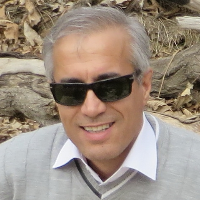Historical Mechanism of Safeguarding of Endowments in Iran
Author(s):
Article Type:
Research/Original Article (دارای رتبه معتبر)
Abstract:
There are numerous properties remained from the past. Up to now, about 34000 historical-cultural movables, immovable, intangible, natural and documentary evidences of heritage have been identified as national heritage in Iran. Also, sixty cases from them have been inscribed as the heritage of humanity in different lists globally. A noticeable part of the mentioned heritage is alive and working and some dated back to several centuries ago such as Nowrouz Celebration, Yalda Celebration, culture of Vaqf, Story-Telling and Narration, Abarqū Cypress, Sangān Cypress, the Sycamore of Maddrasseh-ye Bāghvār (Bāghvār Schools Sycamore), Masjed Jāme-ye Esfahan, Kashkān Bridge, Qanat of Gonābād County, Matting of Masjed Jāme-ye Meybod, Carpet of Sheik Safi Mausoleum, Pulpit of Masjed Jāme-ye Abyaneh, the book Al-Tafhīm by Abu Rayhān, deed of endowment of Rab-e Rashīdī. Approximately, another half of the ancient identified properties have been abandoned and many of them have been completely destroyed and nothing has been left for us expect a number of names that include such as palace of Shāh Abu Ishāq Injū who desired to construct a palace similar to Ctesiphon in the city of Shiraz, or Kāshamar Cypress which was cut by the order of Motevakkel, or carpet of Negarestān or Bahār-e Khosrow which was laid in Ctesiphon. What have been left for us as barren tangible properties are relics of settlements, buildings, and furniture. Nowadays, these are all considered as a part of cultural heritage that hold national trust and are significant importance in terms of scientific, historical and artistic points. At the present time, vaqf heritage constitutes a large part of the Iranian cultural heritage including immovable, movable, intangible, natural and documentary heritage. Endowments are mostly properties for public use for example mosques, schools, hospitals, orphanages, caravanserais, bazaars, public baths, water reservoirs, mills, farms, gardens, books, chandeliers, street lamps, carpets, tools and instruments. Most of endowments from the past are active and functional among which may date back to more than a millennium. In comparison with ordinary properties, endowments have been less destroyed, seized or distorted. Although many numbers of them have been wasted except their names that have been mentioned in deeds and documents. This means that vaqf heritage is survivable in spite the fact that it is susceptible of destruction. What kind of mechanism did vaqf heritage, in general, and endowments, in particular, keep safe against destruction and annihilation? Regardless of difference and diversity regarding period, geography and religion, vaqf enjoys some changeless fundamentals, and moreover, even the elements of the composition of deeds of the endowment are relatively similar. Examination of historical experiments of vaqf proves that there exist almost identical procedures in the safeguarding of the endowments and there has been no basal change through the course of time or different religious atmospheres in the said procedures. The authors of the article have tried to investigate a large number of deeds of endowments which have been mostly written in Persian language and belong to Iran. And generally speaking, except some minor differentiation, we did not find any noticeable difference in the examples under study. Finding answers to the mentioned questions would furnish us with our anscestors attitude and behavior toward endowments as well as their motivations to safeguard them. Such information will pave the way for more scrutiny and comparison of the past measures with the methods, basics and principles of modern times which we use to keep cultural heritage safe. This may provide us with a dialogue between historical mechanism of endowment safeguarding and the basics of safeguarding of cultural heritage. This paper aims to study and find the factors that take care of vaqf heritage and its historical mechanism.
Keywords:
Language:
Persian
Published:
Iranian Archaeological Research Journal, Volume:7 Issue: 15, 2018
Pages:
239 to 257
magiran.com/p1812785
دانلود و مطالعه متن این مقاله با یکی از روشهای زیر امکان پذیر است:
اشتراک شخصی
با عضویت و پرداخت آنلاین حق اشتراک یکساله به مبلغ 1,390,000ريال میتوانید 70 عنوان مطلب دانلود کنید!
اشتراک سازمانی
به کتابخانه دانشگاه یا محل کار خود پیشنهاد کنید تا اشتراک سازمانی این پایگاه را برای دسترسی نامحدود همه کاربران به متن مطالب تهیه نمایند!
توجه!
- حق عضویت دریافتی صرف حمایت از نشریات عضو و نگهداری، تکمیل و توسعه مگیران میشود.
- پرداخت حق اشتراک و دانلود مقالات اجازه بازنشر آن در سایر رسانههای چاپی و دیجیتال را به کاربر نمیدهد.
In order to view content subscription is required
Personal subscription
Subscribe magiran.com for 70 € euros via PayPal and download 70 articles during a year.
Organization subscription
Please contact us to subscribe your university or library for unlimited access!



